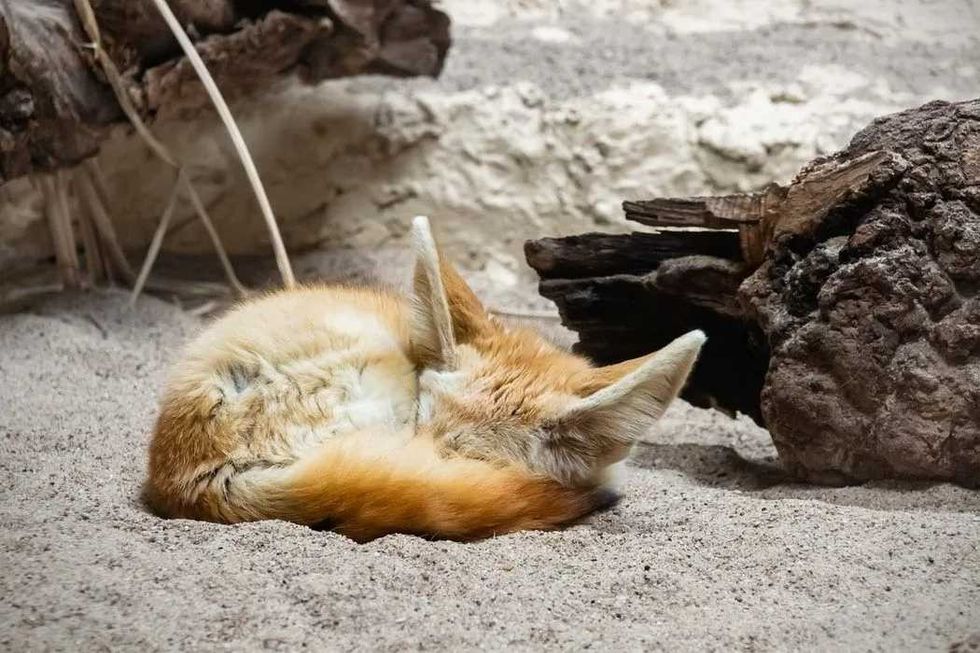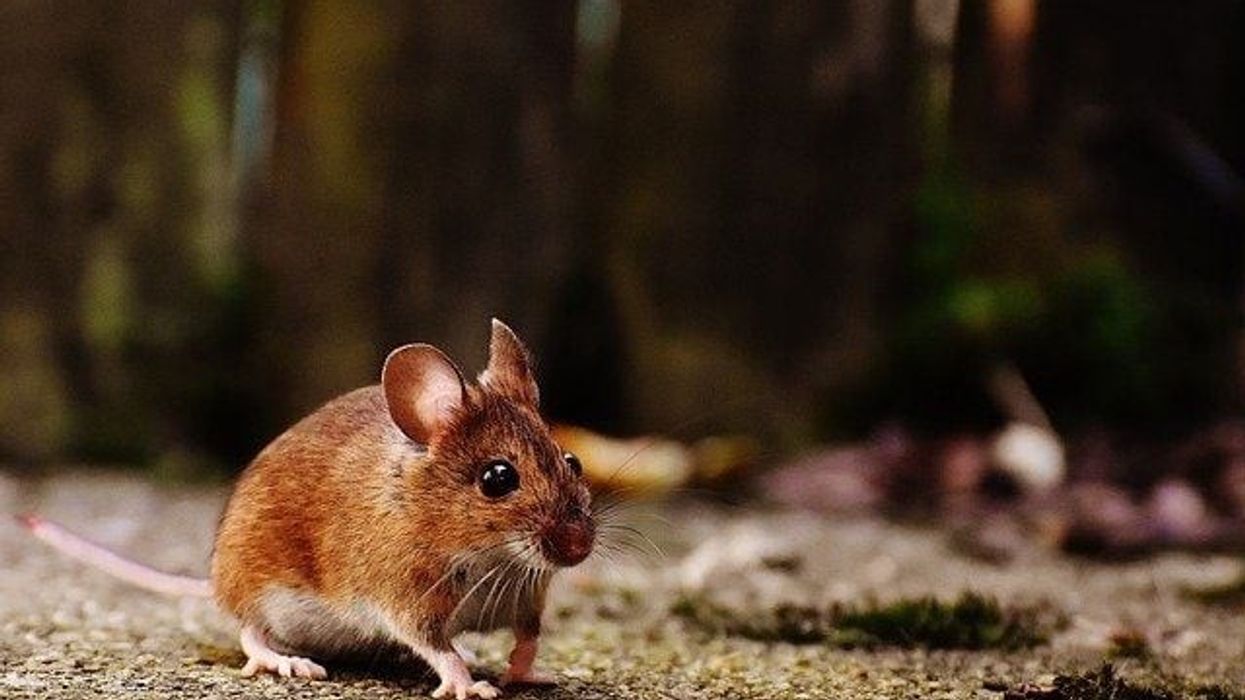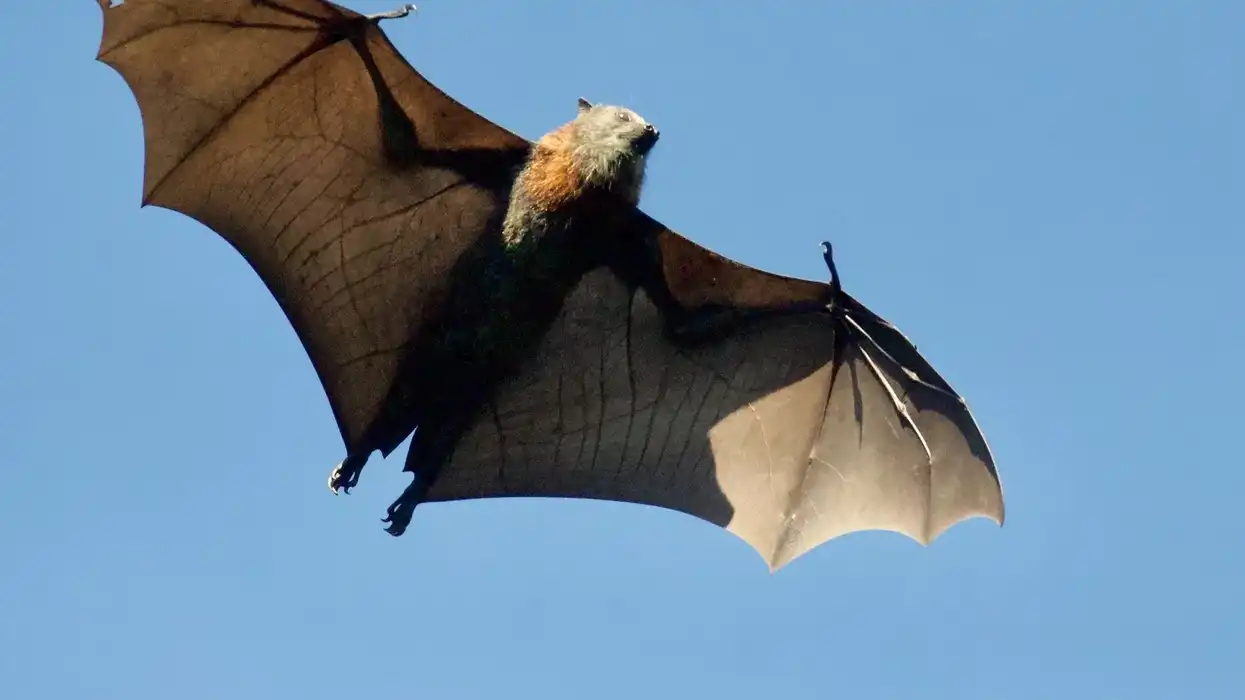The fennec fox (Vulpes zerda) is a small crepuscular fox that is the native of the Sahara Desert and the Sinai Peninsula. It has large ears which is to dissipate heat that makes one of the most distinctive features.
The fennec fox is one of the smallest canid species and thrives in North Africa region of the Sahara desert. They can live up to 10 years in the wild while the age in captivity live up to 13 years.
It is one of the most adored fox species, thanks to its large ears and cute appearance. Like other fox species, fennec foxes are opportunistic eaters and can consume meat as well as veggies.
Usually, you will find two fennec foxes living together in the desert. They mark their territory by urinating, much like dogs.
They dwell in the sandy parts, and their nocturnal habits help them deal with the searing heat. It is known to possess cuteness and charm for the way it looks like. It is the world’s smallest fox.
It is considered an exotic pet in some parts of the world. The foxes are adapted to live their life in the desert. Let’s have a look at some of the facts about the fennec fox.
Fennec Fox Interesting Facts
What type of animal is a fennec fox?
Fennec fox is the smallest fox in the world and is native to the Sahara Desert. It is a small crepuscular fox.
What class of animal does a fennec fox belong to?
Fennec fox (Vulpes zerda) belongs to the class of mammals as they give birth directly to the offspring instead of laying eggs. They have adapted well to the wild desert life and can live without water for considerable durations.
How many fennec foxes are there in the world?
There is no accurate number so as to how many fennecs are there in the wild . The number of fennecs differs according to the different parts of the world. There are different factors that are responsible for the conservation of fennec foxes such as harsh environment, elusive nature, and nocturnal behavior.
Where does a fennec fox live?
Fennec foxes usually prefer living in the wild sandy deserts and arid regions, which have desert grasses or scrub vegetation. As they are native to the Sahara Desert, they most like to live in an environment comprising desert areas and arid regions.
What is a fennec fox's habitat?
Fennec foxes like to live in the sandy areas as they are native to the Sahara Desert and also want to live in the arid regions with the desert grasses. Fennec foxes mark their terrain with urine and feces in order to understand that it’s their place.
Who do fennec foxes live with?
Fennec foxes live in a family that comprises family units of males and females living with their kits. They love to stay in a family with their little ones.
How long does a fennec fox live?
Fennec foxes have a lifespan of up to 11 years. The lifespan of a fennec fox also depends on different factors such as its surroundings and other environmental factors. They may live for more years if they are given the proper nutrition that is needed by their body.
How do they reproduce?
Fennec foxes are monogamous and mate for life. Their litter size is two to five kits and has a gestation period of about 50 days.
Once the kits are born, the female stays with the kits until they are weaned, and once they become mature enough then the male ventures to hunt for food. The kits get sexually matured at 10 months old.
What is their conservation status?
The conservation status of fennec foxes is said to be of the 'Least Concern'. The fennec foxes need to be taken care of as they belong to the category of least concern.
Fennec Fox Fun Facts
What do fennec foxes look like?
Fennec foxes have their fur coats which are long and thick along with being super soft to allow them the much needed protection against the elements. The color of the fur coat ranges from cream to white.
The undersides of the fennec foxes are shiny white in color, with black tips on their tail which is bushy in appearance.
The distinctive feature in fennecs are the large ears. These large ears help fennecs regulate their body temperature as well as give them a heightened sense of hearing to detect underground prey.
How cute are they?
Fennec foxes are cute as they look like miniature foxes. Their ears and fur coat make them look cute and also help them survive in one of the harsh climates in the world. The one main difference is their ears as they are huge.
How do they communicate?
Fennec foxes complete the process of communication through various types of calls including barks, growls, and squeaks. They use a variety of sounds in order to communicate with their fellow partners.
How big is a fennec fox?
Fennecs are regarded as the smallest foxes in the world and are in fact are just around 7-16 in long. They are regarded as the smallest canids.
How fast can a fennec fox move?
Fennec foxes have the ability to run about 20 miles per hour.
How much does a fennec fox weigh?
The weight of a fennec fox is 1.50-3.52 lb. The weight also differs according to their diet and what they eat so as to keep themselves healthy.
What are their male and female names of the species?
The male name of the fennec fox is called reynard and the female name of the fennec fox is called vixen.
What would you call a baby fennec fox?
The baby fennec foxes are called kits. The baby fennec fox looks very cute when they are born as they are small in size.
What do they eat?
Fennec foxes prey on a wide variety of insects and animals. Their preferred prey are lizards, grasshoppers, locusts, birds, and bird eggs. They also eat fruits and plant leaves as they are opportunistic eaters and are omnivore in nature.
Are they dangerous?
No, fennec foxes are dangerous but they are also not domesticated. It depends on how you treat them. If you treat them with love and care, then there is no harm to human beings.
Would they make a good pet?
Yes, fennec foxes make a good pet as some of the people do keep rear fennec foxes as pets. It is legal to keep them as pets in most U.S states.
They are kept as pets as they have playful nature like little dogs. They are social animals and if they are given a proper and playful environment, then they can be a good house pets. However, they like to live in sand dunes.
Did you know...
Fennec foxes have the ability to hear to locate underground prey. They have long ears which are four to six inches long. Their kidneys are specially adapted to conserve water and can obtain moisture from the food that they eat.
Fennec foxes are known to have a dedicated family life as they stay together with their little ones. They have a rich social life and like to be in tight-knit social circles.
Fennec foxes are skilled communicators and use an array of different vocalizations. They are so well adapted to the desert life that they can live without water for a long period of time.
Unique features of the fennec fox
One of the most unique features of the fennec fox is its distinctive ears that radiate body heat and keep them cool.
They also have long and thick hair that helps them during cold nights and also protects them from the hot screeching sun.
The fox’s feet are hairy to help them protect themselves from the extremely hot sand.
They do not need to drink water as they are adapted to living a life in the desert.
They love their nightlife as they spend most of their afternoon time in their underground burrows to keep themselves cool during the day and keep them out of the heat.
Fennec foxes as pets
Yes, fennec foxes are kept as pets by some people as they are playful and are cuddly with people. You should make sure that you provide them with enough space to perform activities. The cost of having a fennec fox as a pet ranges between $2500-$3500.
Here at Kidadl, we have carefully created lots of interesting family-friendly animal facts for everyone to discover! You can even occupy yourself at home by drawing one on our fennec fox coloring pages.









